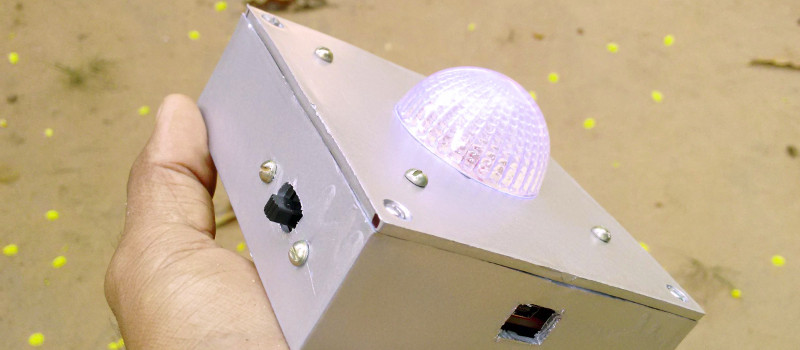Our Coin Cell Challenge competition has turned up some amazing entries, things that we wouldn’t have thought possible from such meagre power sources. Take [Vishnu M Aiea]’s entry for instance, a device which he claims can light up as a birthday reminder every year for up to fifty years.
At its heart is a modified Arduino Nano clone that draws a measured 608 nA from a CR2450N. From the specification of the cell he has calculated the 50 year maximum figure, as well as a possible 29 years for a CR2032 and 64 years for a CR2477. He does however note that this does not take self-discharge into account, but you can probably afford a new battery in a decade or so.
The Arduino clone carefully selected for its “P” version low-power processor has had its serial bridge IC removed to achieve this power consumption, as well as a voltage regulator and some discrete components. Interestingly he notes that the ATMega168P is even more frugal than its 328 cousin, so he’s used the former chip. A selection of internal flags are set for minimal power consumption, and the internal oscillator is selected to use as low a clock speed as possible. There is an Intersil ISL1208 low power RTC chip mounted on a piece of stripboard to provide the timing, and of course an LED to provide the essential birthday alert.
When the LED lights for the big day there’s always the hope you’ll receive another coin cell, this time powering an edge-lit musical birthday card.















I wonder at the possibility of constructing an R-C oscillator with a one-year cycle time.
Good luck calibrating that.
It’s pretty easy. Calibrate it for a period of 8 years, and use PLL to get the desired clock.
I’m thinking of designing a small PC application in Processing to sync the time. The time can be synced anytime manually with a serial client over USB for now.
Get an MSP430 Wolverine in there, really stretch out that lifespan.
Thanks for the input :)
Since the RTC can be programmed to trip every year, this project could be simplified significantly. Also less than half the draw.
Yes it can. If we tie the interrupt output of the RTC to some other alarm system or light through a relay driver we can pretty much operate anything every year. The MCU only needed for time setting and any other fancy behavior.
In 58 years, I’ve never forgotten my birthday. Even if I did, someone in the family will remember. Plus, my great, great, great grandfather died on the same day, 103 years before me.
Martin Luther King III, Weird Al Yonkovitch, Amanda Sternberg (from the first, “Hunger Games” movie) also share the same birthday, so there re plenty of Wikipedia entries I can check.
Catherine Deneuve and Louis Riel were born on the day before mine, so that’s backup.
I’m not sure I’ll be around in fifty years to see if the battery lasts long enough.
Michael
If you are worried about the device outlasting you, I guess you could always stick these on a tombstone as a nifty memorial marker! I wonder if a solar cell and supercap would make it last longer or if they end up degrading faster than the lithium battery…
Personally thought of combining the two projects somehow to give my kids a birthday card with my voice wishing them a happy birthday from their living father that COULD outlast me. Sure, a video or MP3 could do the same, but this seems more memorable. Like the tombstone idea as well. Reminds me of some previous ideas along thatline.
I’m thinking of designing a small custom PCB with SMD components to make it a card or a locket. Keep an eye on the project log ;)
I really hope nobody here at HAD really believes that battery will last that long…
Otherwise, what lifetime should i claim about my unpublished project with a battery in a box and no circuits?
Self-discharge was mentioned in the writeup, and with a project like this, it’s probably the limiting factor. So maybe 10 years on a normal battery. However, there _are_ some exotic cells that’ll last 30-40 years, so maybe?
The 50 year expected life time is indeed including the nominal self-discharge of the cell as specified by the manufacturer. Coin cells supposedly maintain their voltage at 2V even just before they fully discharge.
Does this anticipate the 2038 problem? Maybe the problem doesn’t apply. Just a thought.
I don’t think so. Because the RTC stores the time in BCD number format unlike counting the seconds with a signed integer. This is what I think, though I don’t know about how the internal control logic of an RTC works.
About the only thing that would work is a Li-SOCL2 cell.